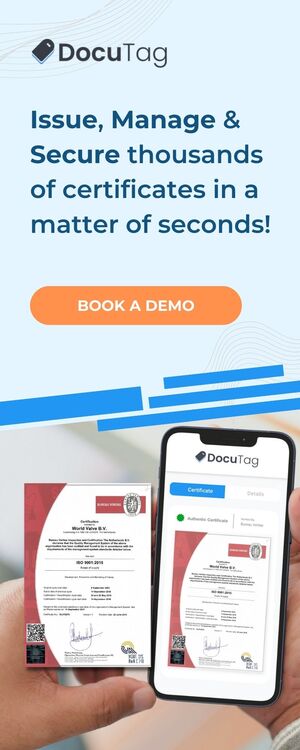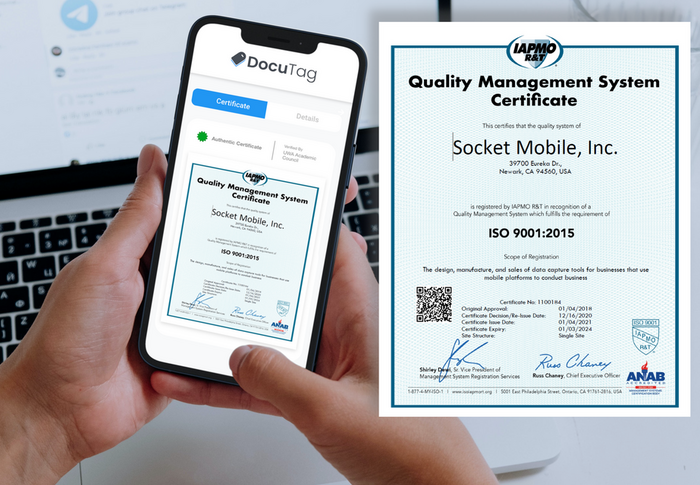“Get closer than ever to your customers. So close that you tell them what they need well before they realize it themselves.” – Steve Jobs
As reported by Business Insider, 1 out of 5 people own a smartphone. This device is not limited to connecting people on social media networks, but it also helps them make better purchasing decisions while shopping in a store.

Nowadays, customers compare similar products from different brands before making their purchase. Thus, to win over the hearts of customers, many brand owners have gradually started integrating QR codes into their product packaging.
QR code (Quick Response Code) was initially designed for fast decoding speed. Today, 2D QR codes can store up to 100 times more information than a typical barcode, making it popular in various industries such as marketing, healthcare, sports, and retail.
Since QR code allows more information to be given in a smaller amount of space, product packaging is no longer an excuse for the lack of information, especially in the retail industry.
Never leave your customers wondering – Kevin Stirtz

With the rising concern about food fraud and misinformation of product details, customers are becoming more careful with their purchasing decision. According to Nielsen, 67% of consumers are concerned about what goes into the products they buy, especially in Fast-Moving Consumer Goods (FMCG).
The lack of information or misinformation could result in consumers switching or ditching the products. In other words, product transparency became a factor in influencing consumer’s buying decisions.
For instance, in 2015, Nestle’s popular product, Maggi noodles, was banned in India for containing excessive amounts of lead, causing health issues to its consumers. Despite the claim is false, it has damaged the reputation of the brand. Since then, the company started sharing a detailed list of ingredients and other important information on safety, environment, society, and recipes through the QR codes on their product packaging. As a result, Nestle regained its consumer trust. Maggi noodles had bounced back as the category leader with a current market share of nearly 60%.
So what is a Product QR code?
It is a code that directs the end-users to a landing page when scanned. Brand owners can share dynamic content such as images and videos rather than just mere text-based details about their products on the page.
Product QR codes enable consumers to have a better understanding and insights into your product value. This technology is convenient and flexible as consumers only need their smartphones to access the information provided within.
Product packaging can be vulnerable at times. However, as QR codes are dust and 30% damage tolerant, the code readability would not be affected even when a part of it is ripped or soiled by leakage. Therefore, it is widely found on many FMCG products globally.

According to the statistics shown by Packaging Insights and Global New Product Database, QR codes are gaining much attention in the retail industry. In fact, in the Asia Pacific region alone, Korea, Japan, and China have shown a rise of 83% in the use of QR Codes on product packaging between 2014 and 2018.
Moreover, 75% of Brazillian shoppers reported their willingness to scan QR Codes regularly for shopping assistance. Meanwhile, 65% of Chinese consumers believe that scanning product QR Codes can provide them with the needed assurance during their purchase.
Benefits of Product QR codes
Product QR codes provide a wide range of benefits as follows:
- Customer engagement
Customers are humans. If your brand can connect with them emotionally, they will like your products and brand more. A highly engaged customer definitely buys more, promotes more, and demonstrates more loyalty to your brand.
For instance, a successful example of customer engagement through QR codes would be Lacoste Championship. This online retro-themed video game was a limited-time campaign in conjunction with Lacoste ATP Tennis Tournament in 2010. Participants had to scan the QR code to take part in the tennis arcade game, and the highest-scoring entrants were rewarded with VIP tickets to the tennis tournament by the end of the campaign. The creative use of QR code by Lacoste has helped the consumers to have a fun interactive experience with the brand while allowing the brand to have a positive connection with the consumers. Simultaneously, the sales of Lacoste have also increased during the campaign as it provides all scanned users with a 15% discount on their products storewide.
- Consumer trust via product transparency
With QR codes, your brand can provide a wealth of product information to potential customers, eliminating all the suspicions and doubts that they might have about your products. Through different engaging approaches, this transparency has a significant impact on customer buying intention and satisfaction.
Therefore QR codes enable manufacturers and consumers to establish trust. It can even help in regaining broken trust with customers (refer to the Nestle case mentioned above).
- Marketing tool
Aside from providing information, QR codes can be a valuable tool for marketing campaigns where brand owners can foster customer engagement and brand awareness. Nowadays, brands are getting more creative with using products QR codes, making a simple purchase more enjoyable and memorable for customers. For instance, Pepsi made a summer campaign in collaboration with Instagram, where scanning a QR code grants consumers access to summer-themed filters and stickers on Instagram encouraging customer engagement.
- Extending brand experience well beyond products
Traditionally, consumers were only able to base their purchasing decision on the information provided on the product packaging or the feedback given by their friends. However, with the convenience of the Product QR code, you as the brand owner can take the initiative to extend the brand experience you wish to showcase to the customers. Not only are they able to access enhanced product information, reviews of other consumers, or other related content that could help your brand to speak to your customers. But the code also delivers the assurance needed for them to choose your products over others.
For example, clothing brand Ralph Lauren has started sewing labels with QR codes onto their garments that link consumers to online destinations that provide product provenance and brand information, authentication, and registry information. Thus, allowing the brand to connect with its consumers directly pre-and post-purchase.
- Personal Shopping Assistant
Sometimes, doubts and questions might be what holds a potential customer back from choosing your brand’s products. While they wish to receive a certain extent of assistance, some customers may be uncomfortable with promoters blasting them with all kinds of information.
This is where QR codes come in. Let them be your customer’s personal shopping assistant that not only gives them the space needed, but you can also solve their doubts from afar.
Attracting Customers with Product QR codes
As a brand owner, QR codes can add an edge to your customer’s shopping experience given how they can link customers to specific campaign websites. A simple scan can provide them with exclusive deals, discounts, and even future offers. They can even be gifted with limited vouchers or get links to demonstration videos that help them enjoy their products to the fullest. Besides, you can share footage of the production line and interviews with representatives who made these products. Thus, building a connection with your customers way beyond the purchase.
Blockchain is Reviving QR Codes
As much as QR codes are beneficial in many aspects, they were still inadequate in terms of security. Hence, paving the way for Blockchain to act as a solution, making these codes safer to be scanned, while providing a high degree of transparency, thus ensuring the trust of consumers.
With that in mind, the combination of blockchain and QR codes are helping brand owners like you achieve two goals at once – building brand success and customer satisfaction.
For instance, to bring it to a higher note, the BrandTag solution uses both of these technologies intending to trigger consumer 360° product experience for your brand. In other words, it does not only help your brand to meet the needs of consumers in terms of information transparency, but it also helps to elevate their trust and experience towards your products.

“Having an app that would protect your products and at the same time engage with your customers is like killing two birds with one stone, truly a need!” – CEO of Luxtag, Rene F. Bernard
As a SaaS (software as a service) solution, BrandTag gives each of your products a unique ID for consumers to scan and verify authenticity. While your consumers are safely scanning your Product QR code, you can gain an insight into their buying intentions and behaviors, helping you in determining your brand’s next marketing direction.
Want to find out more about BrandTag? Check out our previous article, BrandTag – Authenticity, Confidence, Engagement, for a thorough explanation of how BrandTag works for you and your brand!
Let your product do the work for you.
Combating counterfeiters is exhausting, we get it. That’s why we developed BrandTag. With BrandTag, your products will promote their authenticity and protect themselves from being counterfeited, with just a scan!






